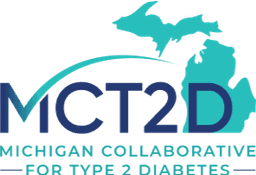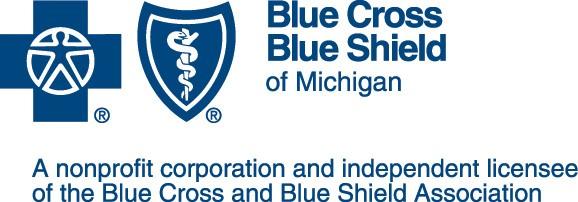NEWS & EVENTS
SPECIALTY CARE
Increasing Use of Continuous Glucose Monitoring (CGM) Devices
CGM devices provide valuable data for improving glucose control and driving diet and exercise behavior change.
LEARN ABOUT CGMCGM TOOLS
Promoting Guideline Directed Medication Prescribing
New classes of medications improve glucose control, decrease mortality, slow chronic kidney disease progression and support weight loss.
LEARN ABOUT MEDICATIONSMEDICATION TOOLSPromoting Low Carbohydrate Eating Patterns
Lower carbohydrate eating patterns may slow or reverse the progression of type 2 diabetes and be more effective than low-fat diets in patients who are trying to lose weight.
LEARN ABOUT LOW CARBLOW CARB TOOLSLEARN ABOUT CGM
Background
Initially developed for people with type 1 Diabetes, CGMs are also effective for people with type 2 Diabetes (T2D) to help monitor blood sugar in real-time and alert patients to low blood sugar. CGMs can be used to help clinicians adjust insulin and other diabetes medications and help patients adopt healthier lifestyles.
What is a CGM?
CGMs consist of a subcutaneous sensor that measures interstitial glucose, a transmitter to send the information, and a receiver device to receive and display information to the patient and their health care team. To use a CGM, a patient applies the sensor to the arm or abdomen every 10-14 days. The transmitter connected to the sensor sends readings every 1-5 minutes to a receiver – either a smartphone or a reader device that displays blood glucose data.
Are you curious about trying a CGM? Get a free Abbott Libre 2 sensor as part of the MCT2D Continuous Glucose Monitor User Experience Program (CGM UEP). The CGM UEP program is open to physicians, nurse practitioners, physician assistants, and pharmacists at any MCT2D practice with the goal of building clinicians' familiarity with using a CGM and ultimately, increasing understanding of the patient experience through an off-label provider trial. MCT2D understands that it is difficult for clinicians to feel fully comfortable prescribing a piece of technology they have never used before and, sometimes, never even seen before.
Learn more about the CGM User Experience ProgramHear from Bob, who has type 2 diabetes:
“I had a CGM. It made it easier to be more accountable. I had more of a goal: to see that number and try to keep it down.”
How can CGMs improve type 2 diabetes care?
Finger poke blood sugar testing provides only a snapshot in time, rather than a comprehensive view of a person’s glucose over the course of an entire day. For example, imagine a patient with a relatively good A1c of 6.5% who checks their blood sugar by pricking their fingers twice a day, once in the morning, and once before bed. Both of these readings are usually in the 120-150 mg/dL range. Between these readings and their A1c result, the patient’s provider does not recommend any changes to diet and medications. However, what this does not show is that this individual is experiencing high glucose levels of 200-250 mg/dL after meals, and low glucose values of 58-70 mg/dL during the night, resulting in their average A1c of 6.5%. By utilizing a CGM, this individual and their provider are able to address both medication optimization and diet modification. After wearing a CGM for 14 days, the patient and provider see these peaks and valleys and the provider suggests that the patient start a low carbohydrate diet to reduce their high glucose peaks after meals, as well as reduce their nighttime basal insulin by 20% to prevent their lows. After a few weeks, the patient wears another CGM sensor, and they see that their post-meal glucose values are now between 130-160 mg/dL and that they are no longer having lows at night. This example helps demonstrate the very real benefit that CGM has for patients with type 2 diabetes.
LEARN ABOUT MEDICATIONS
What is guideline-directed care?
MCT2D aims to align medication prescribing with guideline-directed care.
Interventions that focus on prescribing in accordance with standards of care as defined by the American Diabetes Association, such as the deprescribing of insulin and appropriate prescribing of medications such as GLP-1 RAs and SGLT2is based on patient comorbidities like chronic kidney disease, heart failure, and/or prior history of heart disease. It also involves ensuring patient-centered treatment selection and substitution of alternative medication if guideline-directed treatments are unaffordable or not covered by insurance.
Why deprescribing of Insulin and Older Diabetes Medications?
Deprescribing is the process of stopping medications in order to improve patient outcomes or reduce polypharmacy.
Older antihyperglycemic medications such as sulfonylureas, dipeptidyl peptidase-4 (DPP4i), and insulin have been shown in clinical trials to be less effective at controlling blood sugar and to provide little protection or treatment for the cardiorenal complications of diabetes. Insulin and sulfonylureas also increase the risk of hypoglycemia and are more likely to be associated with weight gain and further progression of diabetes complications.
Deprescribing of these medications is appropriate for patients whose blood sugar is at goal, those who are at higher risk of hypoglycemia, and those who would benefit from treatments to treat or prevent diabetes complications and comorbidities like chronic kidney disease, heart failure, and atherosclerotic cardiovascular disease (heart attack and stroke). These patients may benefit from selecting other medications that improve patient outcomes, also known as “guideline-directed medical therapy (GDMT)
What is Medication Compliance and How Does it Relate to Guideline Directed Medical Therapy and Deprescribing?
Newer, more effective classes of diabetes medications may be unaffordable due to lack of insurance coverage, high copayments, and out-of-pocket costs. Medicare and other payors measure medication adherence to antihyperglycemic medications to ensure patients are able to afford and take their medications. Clinicians can inquire about and understand any hardships that are getting in the way of patients adhering to these newer medications and prescribe an alternative medication to treat hyperglycemia.
This alternative medication would ideally be a different medication in the same class that may be better covered (preferred status) by insurance. In cases where a patient does not have insurance or is unable to afford their insurance’s co-pay, an affordable alternative class of medication, such as metformin, a sulfonylurea, a DPP-I, or insulin, can be considered to avoid a lapse in treatment for hyperglycemia.
Appropriate prescribing of GLP-1 Receptor Agonists & SGLT2 inhibitors
These classes of medications improve glucose control, decrease mortality and adverse cardiovascular events, slow chronic kidney disease progression, and support weight loss.
What Are Sodium Glucose Cotransporter-2 Inhibitors (SGLT2i)?
SGLT2is are a class of glucose-lowering drugs that prevent the reabsorption of blood glucose filtered by the kidneys, leading to glucose excretion in the urine. SGLT2is have added benefits for patients with heart failure, atherosclerotic cardiovascular disease, and chronic kidney disease. SGLT2is can also facilitate weight loss.
What Are Glucagon-like Peptide-1 Receptor Agonists (GLP-1 RAs)?
GLP-1 RAs are a class of glucose-lowering drugs that work by stimulating the release of insulin by the pancreas in response to eating, reducing appetite, and increasing fullness after a meal by slowing gastric emptying. GLP-1 RAs have added benefits for patients with cardiovascular disease and chronic kidney disease and facilitate weight loss for patients with type 2 diabetes and overweight or obesity.
Why SGLT2is and GLP-1 RAs?
Scientific studies demonstrate the benefit of these two classes of medications in reducing cardiovascular and renal complications for patients with type 2 diabetes. While historically, clinicians prescribed medications only for glucose lowering, now the American Diabetes Association Standards of Care recommend therapy directed at preventing complications, controlling blood sugar, and helping people achieve weight loss to improve outcomes in type 2 diabetes.
Evidence
Evidence is changing rapidly with regard to first-line and second-line medications for the treatment of hyperglycemia in type 2 diabetes. SGLT2is and GLP-1RAs are now first-line medications for patients at high risk of cardiovascular and renal complications and those with obesity. Many barriers exist to the implementation of this evidence into primary care practices, including the cost of medications, knowledge among primary care physicians, and patient education.
LEARN ABOUT LOW CARB EATING
Low carb eating patterns may slow or reverse the progression of type 2 diabetes and may facilitate weight loss more effectively than low fat eating plans.
Background
Recently updated American Diabetes Association (ADA) Standards of Care now recommend that patients reduce their overall carbohydrate consumption as a means of improving their glucose control. High carbohydrate diets, particularly those in processed sugars, can drive the progression of T2D. Low carbohydrate diets can help lower circulating insulin levels and help people reduce glucose spikes, decrease hunger and cravings for sugar and unhealthy processed carbs, and help with weight loss. Studies like LOOK AHEAD show that an intensive lower carbohydrate [rephrase] can help prevent T2D [8]. Low carb diets are defined as < 130 grams of total carbs per day while very low carb plans are defined as <50 total grams of carbs per day.
Change starts with nutrition
“I thought I was trying! I spent most of my day trying to manage my diabetes. Constantly trying not to eat but always eating it seemed like. And fighting my portions. It was constant." — Frankie
Hear how Frankie’s life changed when he embarked on a new approach to managing his type 2 diabetes:
Guidelines
Low and very low carbohydrate diets are supported by guidelines from the 2023 American Diabetes Association Standards of Medical Care in Diabetes: “For individuals with type 2 diabetes not meeting glycemic targets or for whom reducing glucose-lowering drugs is a priority, reducing overall carbohydrate intake with a low- or very low-carbohydrate eating pattern is a viable option.”



